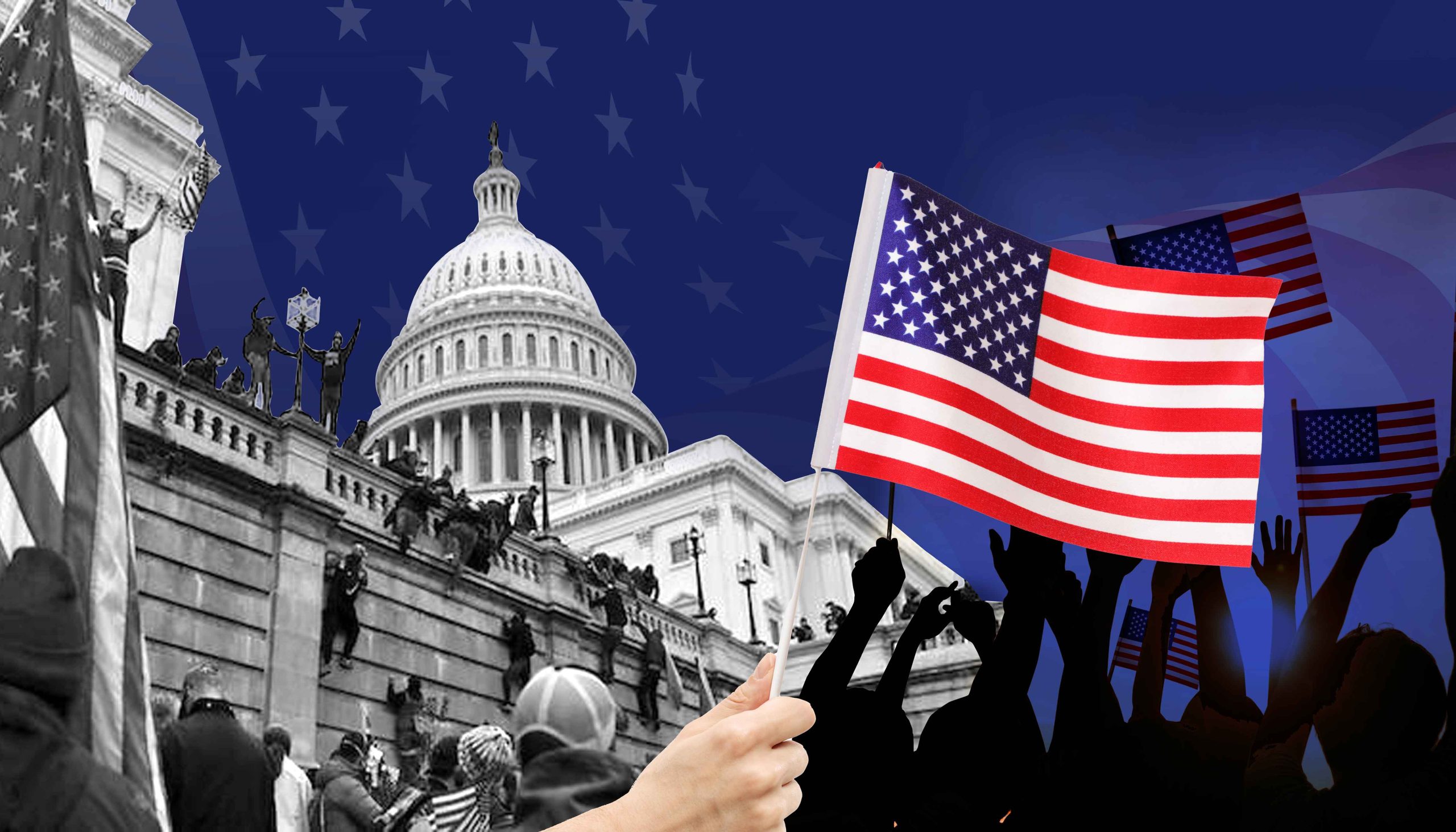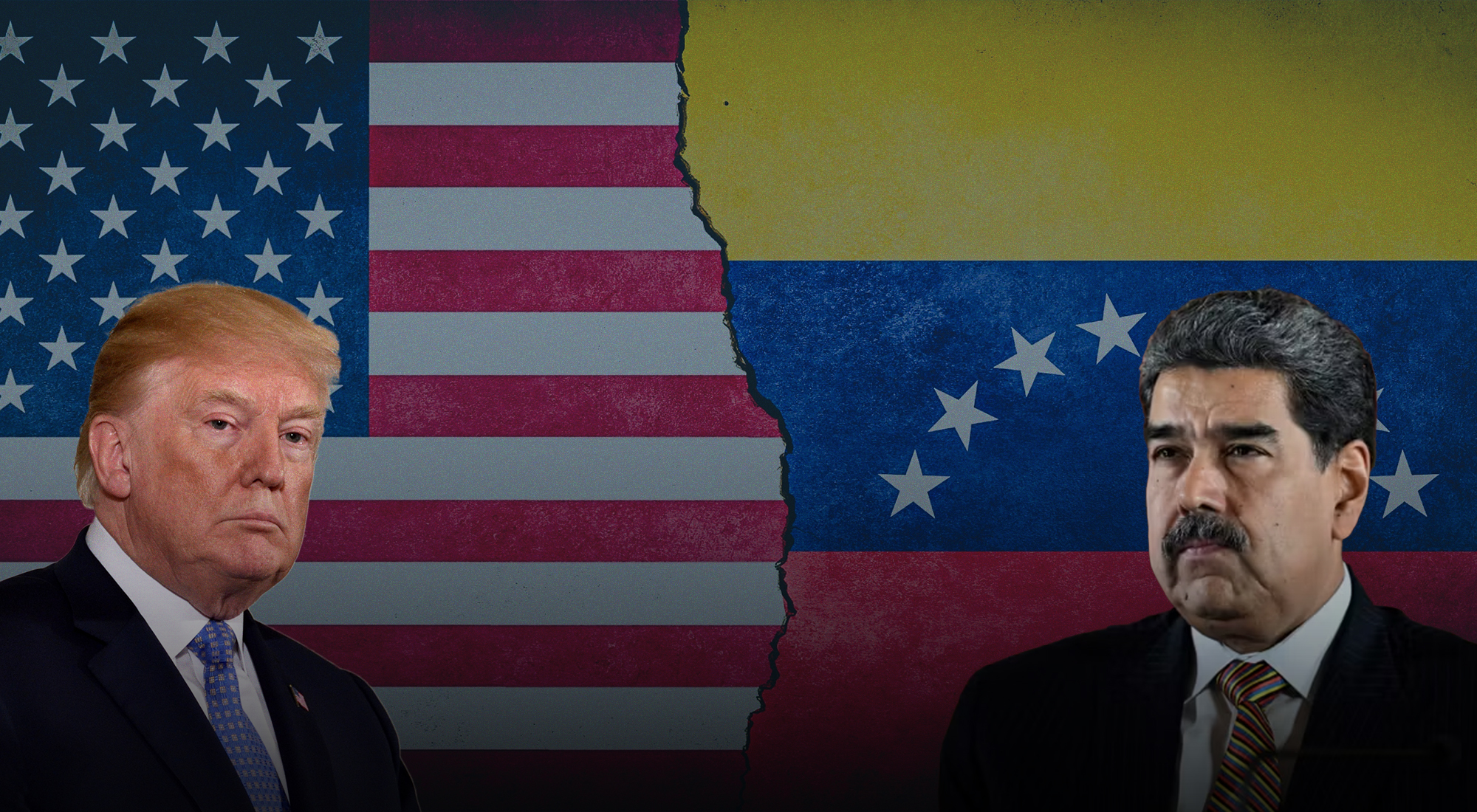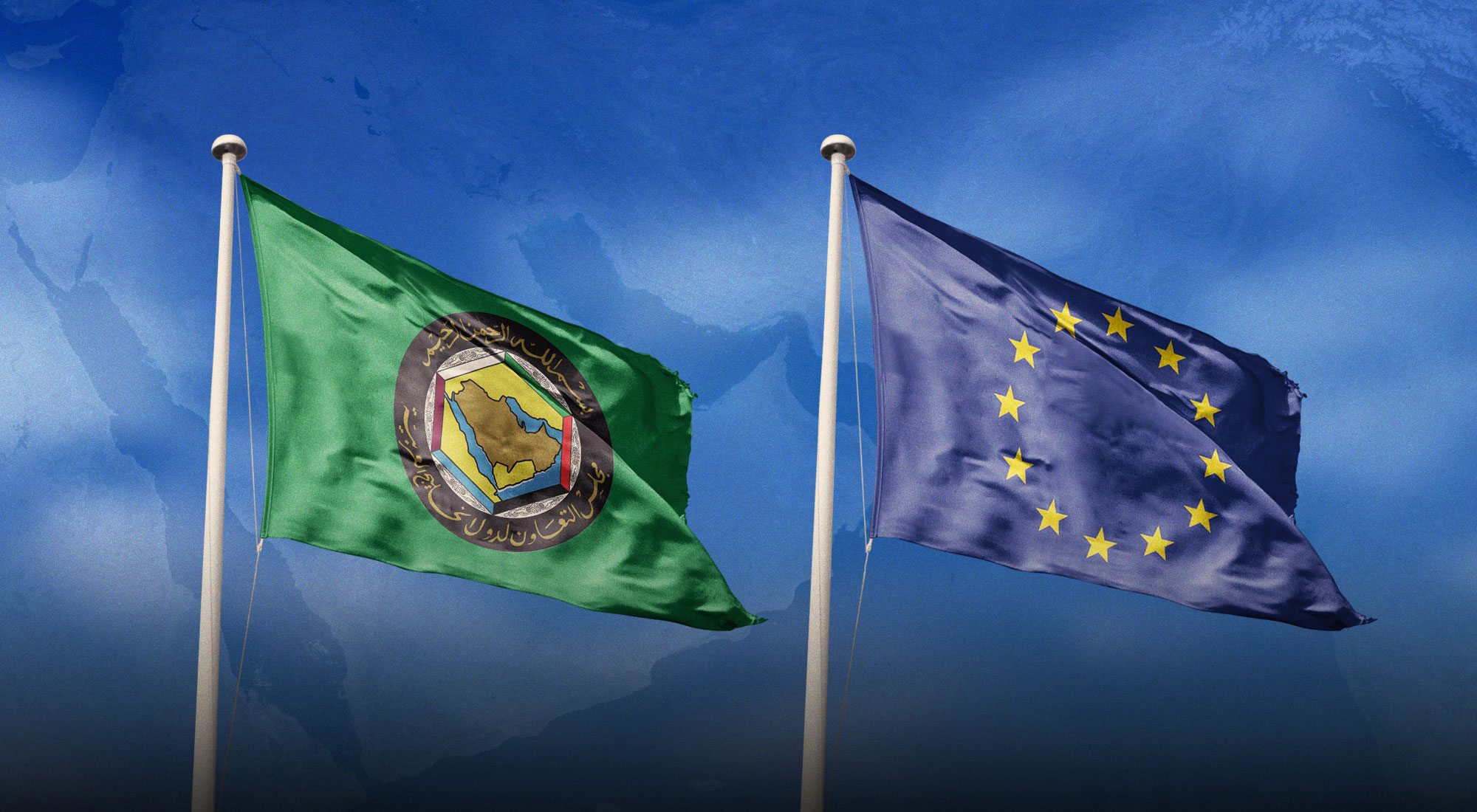More than two decades following the 11 September terrorist attacks, which claimed nearly 3,000 lives and sparked America’s ‘War on Terror,’ the threat of Salafi-jihadist attacks against the United States has significantly diminished. The focus of national security concerns today has shifted from international terrorist organizations such as Al Qaeda and ISIS to the growing threat of far-right domestic extremists. This shift reflects changes in the nature of terrorist threats, with domestic groups increasingly engaging in violent activities and adopting ideologies that pose significant risks to public safety and national security.
In the months following the 6 January 2021 insurrection at the U.S. Capitol, U.S. Attorney General, Merrick B. Garland and Homeland Security Secretary Alejandro N. Mayorkas acknowledged during a Senate appropriations committee meeting that the greatest threat the U.S. currently faces comes from “racially or ethnically motivated violent extremists,” particularly those who “advocate for the superiority of the white race.”[1] Similar concerns were expressed by the Federal Bureau of Investigations (FBI) in 2020, predating the 6th January insurrection, wherein the FBI elevated its assessment of the threats posed by domestic, racially-motivated violent extremists to a “national threat priority” comparing the threat level to that of international terrorist groups such as ISIS, according to FBI Director Christopher Wray.[2]
Further adding to worries, the 2024 Global Terrorism Index determined that out of the seven politically motivated attacks that occurred during 2023, five were attributed to individuals with far-right sympathies or connections.[3] The 2024 Department of Homeland Security Homeland Threat Assessment also found that domestic violent extremists (DVEs), often inspired by foreign terrorists, will attempt to spark violence in response to sociopolitical events, conspiracy theories, and anti-establishment and government ideologies that are typically disseminated on online platforms by anonymous users. There are also growing fears within the U.S. Department of Homeland Security that DVEs may seek to again “disrupt electoral processes” as the U.S. draws closer to the November 2024 presidential election.[4]
The current political climate in America remains highly divisive, casting a shadow that the results of the 2024 presidential election could reignite the disbelief and resentment that led to the violent 6 January insurrection in 2021. This heightened polarization poses significant risks to political stability, democratic norms, and public safety, underscoring the importance of addressing the underlying causes of domestic extremism. This research article aims to analyze the factors driving the recent surge in domestic violent extremism and to examine the extent to which far-right extremism has permeated mainstream American politics, particularly as the country heads into another consequential election year. By understanding these dynamics, this insight aims to highlight the underlying causes and potential solutions to mitigate the threat of domestic violent extremism.
Far-right extremism
Far-right extremism is characteristically associated with exclusionary nationalism and nativist ideologies, which typically fall on the “fringe” of today’s modern political party affiliations. The Anti-Defamation League characterizes the alt-right as a “repackaging of white supremacy by extremists seeking to mainstream their ideology.”[5] However, the movement is much broader and continues to evolve within the U.S. political landscape, often displaying traits of misogyny and anti-globalism, while thriving on conspiracy theories.
There remains an indisputable correlation between DVEs and alt-right extremists, as DVEs are often motivated by similar ideologies, including racially or ethnically motivated agendas, anti-authority sentiments, blind consumption of unfounded false narratives, and perceived government overreach and illegitimacy.[6] Central to the alt-right doctrine is the belief that the 2020 election was ‘stolen’ from Donald Trump and that Joe Biden remains an illegitimate president.
A more recent phenomenon, the ‘alt-right,’ is an offshoot of the far-right movement that surged in popularity during the 2016 U.S. presidential election. This digital-savvy movement thrives by utilizing online platforms to spread extremist propaganda, typically targeting disenfranchised, younger American males. Alt-right online platforms—the ‘wild west’ of cyberspace—have become a seemingly lawless corner of the Internet where extremist views are left to proliferate as a result of limited censorship.
Historical context of far-right movements in the U.S.
The origins of far-right movements in the U.S. can be traced back to the mid-19th century, with the establishment of the Ku Klux Klan (KKK) in 1865. The KKK, founded by former Confederate soldiers, operated as a secret society with the primary objective of maintaining white supremacy in America, employing violence, intimidation, and terror tactics against African Americans and their allies. The rise of the KKK was a reaction to the Reconstruction era, which aimed to establish equality and secure voting rights for Black Americans following the Civil War. The Klan’s activities included lynchings, arson, and other forms of violence designed to undermine Reconstruction efforts and restore pre-war racial hierarchies.[7]
During the 1980s and 1990s, neo-Nazi and skinhead groups experienced a significant rise in popularity in the United States. Unlike the KKK, these groups have a truly global presence, with skinhead gangs operating in major cities across nearly every predominantly white-majority country worldwide. Several factors have contributed to this surge in neo-Nazi and skinhead activity. Economic hardships spurred by the 1981-1982 recession, resulting in a 10.1% unemployment rate, left many working-class individuals feeling disenfranchised and equally prone to recruitment by extremist groups.[8] Social and cultural changes, including a rise in multiculturalism resulting from increased immigration, also promoted increased resentment against minorities.
Additionally, the political climate of the 1980s and 1990s can be characterized by a rise in conservative politics underpinned by a strong emphasis on “law and order,” providing fertile ground for hate groups to multiply. Operating under the guise of America’s “true defenders” of traditional values, white supremacist groups often capitalized on societal fears and anxieties to recruit and mobilize new members.
The far-right movement gained significant political traction in the early 2010s due to a combination of social, economic, and political factors. The rise of the Internet and the proliferation of social media platforms significantly amplified far-right messaging. The movement became known for weaponizing memes and visual propaganda due to their simplicity and shareability. The election of Barack Obama, the country’s first African-American President, has also been linked to the resurgence of the alt-right. While President Obama’s win was celebrated by many as a significant step toward racial equality, it deeply triggered those associated with the alt-right, fundamentally due to racial reasons. This frustration was further intensified by the 2008 financial crisis and a sharp rise in unemployment, fueling the alt-right’s anti-establishment rhetoric.
More recently, advancements in civil liberties have also further fueled a sense of alienation among certain segments of the population, further promoting bigotry and causing skinhead groups to preach for increased “violence against blacks, Hispanics, Jews, Asians, and homosexuals.”[9] Some may argue that the promotion of left-leaning social equality paved the way for the rise of right-wing ideology. For instance, biological male participation in women’s sports has continually fueled right-wing resentment and frustration, claiming some athletes maintain an unfair competitive advantage over others. While the far-right views inclusivity with regard to certain types of athletes as a threat to the integrity and fairness of competition, such hot button, polarizing debates have evolved into a political tactic to position sensitive issues at the center of American discourse.
Another initiative that gained momentum was the inclusion of gender identity and related social issues in school lessons, sparking significant debate among educators, parents, and policymakers. Further adding to the frustration of the far-right, guidance published by the U.S. Department of Agriculture under the Biden Administration in 2022 stated that “programs that receive federal nutrition money need to state their policies for combating certain types of gender discrimination,” which immediately sparked outrage among the right. Florida Governor Ron DeSantis claimed Biden was attempting to deny school lunch programs for states that do not promote certain types of ideology in public schools.[10] Such examples can be cited as contributing to the rise of right-wing ideologies, as they can influence public opinion and galvanize support for conservative causes that oppose what they perceive as federal overreach and cultural shifts in education.
Charlottesville: a prelude to the 6th January insurrection
More recently, the U.S. experienced two strikingly parallel assaults stemming from far-right grievances. The first incident occurred in August 2017 in Charlottesville, Virginia, during an event organized by neo-Nazi groups and Klan members, dubbed the “Unite the Right” rally. The event was orchestrated in response to a vote taken by the Charlottesville City Council to remove a Confederate-era statue of the pro-slavery general, Robert E. Lee, viewed by many as a dark reminder of America’s original sin—the business of slavery. The decision to remove the statue, which had long been viewed as a symbol of racism and white supremacy, prompted hundreds of right-wing white nationalists to take to the streets, entering violent confrontations with counter-protestors, resulting in one death and nineteen injuries, including five critically.
The violence in Charlottesville was seen as a turning point for far-right groups, largely due to the perceived indirect support from then-President Donald Trump. In the days following the attacks, Trump initially labeled the violence as “horrible” but added the violence in Charlottesville came from “many sides” of those in attendance, avoiding directly blaming the white nationalists responsible for the domestic terror, adding there were “very fine people” on both sides of the violence, further doubling down on his position.
There were numerous recognizable alt-right public faces at the Unite the Right rally, including antisemitic conspiracy theorist and neo-Nazi Richard Spencer, and co-founder of the event. Spencer is well known for coining the phrase “alternative right” back in 2008 and has since served as the movement’s unofficial spokesman. Former Grand Wizard of the Ku Klux Klan, David Duke, one of America’s highest-profile white supremacist and antisemitic activists, was also in attendance in Charlottesville, who told reporters, “We’re here to fulfil the promises of Donald Trump. That’s what we believed in, that’s why we voted for Donald Trump—because he said he’s going to take our country back.”[11]
Democrats were quick to point out that many of the rally-goers were supporters of the former president, arguing that his reluctance to denounce and hold his followers accountable was an injustice to the country, perpetrated by the commander-in-chief himself. As a result, this fringe segment of society—one that had been shunned and condemned by both sides of the political spectrum for decades—was now “being brought back into the political mainstream by Donald Trump, and Charlottesville was the moment,” according to conservative political commentator Charlie Sykes.[12]
The lack of unequivocal condemnation of the alt-right following the deadly attacks in Charlottesville arguably emboldened the movement, as they perceived minimal consequences for their violent actions. This sense of impunity contributed to the events leading up to the 6th January insurrection at the U.S. Capitol in 2021. Increasing political polarization across the country, along with efforts by many far-right figures, including some within the Republican Party, to sow doubt and distrust in American institutions, further fueled their aggression.
The ongoing normalization of political violence culminated in the violent breach of the U.S. Capitol on 6 January by a group of protestors attempting to overturn the certification of the 2020 presidential election. This unprecedented event forced the evacuation of lawmakers and resulted in a temporary halt in the congressional certification of electoral votes. The incident underscored the vulnerability of democratic processes in the face of political unrest.
The attack led to significant casualties and injuries, resulting in the deaths of five individuals, including Capitol Police officer Brian Sicknick. Officer Sicknick, who defended the Capitol and physically engaged with the rioters, suffered two strokes and passed away the following day. The violent siege led to serious injuries for 140 law enforcement officers who faced assaults from weapons, chemical sprays, and physical beatings from the mob.
The significance of normalizing far-right extremism
Despite the ongoing efforts of the Justice Department and the FBI to hold those responsible for the 6th January insurrection accountable, including the arrest and prosecution of hundreds of individuals involved in the riot, the alt-right movement remains undeterred in its efforts and instead has learned valuable lessons from 6 January. The predominately male, right-wing extremist group known as the Proud Boys, who led the 6th January riots, is currently “rebuilding and regaining strength”[13] in preparation for a potential second term for former president Trump. To date, at least seventy Proud Boy members across the U.S. have been arrested in relation to their participation in breaching the Capitol and partaking in violent activity, including assaulting members of law enforcement.
In September 2023, the group’s former national chairman, Enrique Tarrio and three lieutenants were charged with seditious conspiracy—a law that was enacted following the Civil War that was meant to address and prevent insurrection, rebellion, and violent attempts to overthrow the government. Despite the severity of Tarrio’s sentence—22 years—there are indications that the group remains undeterred. Reports suggest that members continue to engage in activities aimed at undermining the democratic process, particularly in anticipation of the 2024 presidential election. The group’s persistence in their efforts raises concerns about potential disruptions and further attempts to contest the election results, especially if Kamala Harris emerges as the winner. This ongoing threat underscores the challenges faced by law enforcement and the judiciary in addressing and mitigating domestic extremism.
Similar to the likes of ISIS and Al Qaeda, the Proud Boys and other alt-right groups have adapted their command structures and de-centralized their organization’s leadership with the intent to evade counter-terrorism measures and reduce their vulnerability in the event their leadership becomes incapacitated—or put in jail. Anti-establishment militias and hate groups, including the Proud Boys, have opted to regroup rather than disband and have begun operating in self-governing state and local chapters, doing away with top-tier leadership and instead exploiting the dark corners of the Internet to spread messaging and lure new recruits.
4chan, launched in 2003, is a popular image-based bulletin board known for its strong emphasis on anonymity and minimal censorship.[14] The platform hosts various message boards, including a politically focused section where users discuss political commentary and global events. 4chan allows users to post comments and share images without revealing their identities, fostering an environment where a wide range of opinions can be expressed freely. Over time, 4chan has evolved to become an unofficial online gathering point for the alt-right, attracting disenfranchised users who feel marginalized by mainstream society, and offering them a virtual community and a sense of belonging.
The lack of stringent moderation has led such sites to become a breeding ground for dangerous conspiracy theories and hate speech, including antisemitic rhetoric and bigotry. Between 2018 and 2019, there was a 120% increase in the distribution of white supremacist propaganda across the United States. Consequently, a growing number of young individuals are becoming desensitized to violence and hate speech, shifting their perception of what is considered socially acceptable behavior.[15]
4Chan, along with various far-right preferred platforms, including Parlor and Gab, played an instrumental role in the lead-up to the 6th January insurrection as well as during the riots. Users utilized the platforms as centralized planning and coordination hubs and updated users in real-time on streets and neighborhoods to circumvent law enforcement. Users also posted examples of tools to bring that would be useful in prying open doors at the Capitol.[16] Once inside, at least a dozen people posted online that they were successful in carrying their guns into the halls of Congress.[17]
Further empowering the violent agitators of 6 January was the culpability of the media. As a result of the real-time broadcasting of the insurrection, nearly 29 million people watched the events unfold live across major U.S. news outlets. CNN ranked in its highest rating in 40 years throughout the day’s coverage.[18] By providing the insurrectionists with uninterrupted airtime, the media grudgingly amplified their voices with imagery of rioters purging the halls of the Capitol in return for a spike in ratings.
This widespread dissemination of voter fraud, along with the belief that the 2020 election had ‘been stolen’ from former President Trump, paired with the premeditated violence on 6 January highlights the longstanding concerns raised by experts who have consistently warned that the regulatory measures governing Internet platforms are inadequate in tackling the issues of extremism and misinformation.[19] The violent assault on the Capitol demonstrates that unchecked online radicalization can pose a significant threat to democracy. This event underscores the urgent need for more robust and effective oversight of digital spaces to prevent the spread of extremist ideologies and the incitement of violence.
Additionally, promoting social cohesion and inclusivity, alongside providing opportunities and support for disenfranchised groups, can significantly weaken the ideological foundations of domestic terrorism, as these groups often prey on younger disenfranchised segments of society who often pine for a sense of belonging and community. In 2021, the Biden Administration launched the National Strategy for Countering Domestic Terrorism, which aimed to enhance information sharing between government agencies to address the root causes of domestic terrorism by reducing systemic inequalities and economic disparities, preventing recruitment and mobilization to violence, and confronting the long-term contributors to domestic terrorism, including racism and bigotry.[20]
John Cohen, a high-ranking official at the Department of Homeland Security, is concerned, however, that the national strategy against domestic terrorism may not be keeping pace with the evolving threat. He points out that the narratives promoted by threat actors are “rapidly finding their way into the mainstream media ecosystem” and that public figures, both in government and the media, are deliberately amplifying these messages, further legitimizing extreme narratives.[21]
Political impact of far-right extremism on mainstream politics
The current dysfunction in Washington can largely be attributed to the growing animosity and polarization between the nation’s two main political parties. Addressing critical issues such as national security, healthcare, and economic policy necessitates effective bipartisan governance and compromise. Growing divisions have resulted in clashes over essential aid packages for America’s allies and nearly triggered a government shutdown in August 2023. Far-right Republican members of Congress threatened to abstain from voting on a spending stopgap, also known as a continuing resolution (CR), as a negotiation tactic to gain political leverage. CRs ensure government agencies can continue functioning at their current or reduced funding levels for a specific period until a permanent budget is agreed upon. This entrenched partisanship has made it increasingly difficult to achieve consensus on important legislative matters, further exacerbating gridlock and inefficiency in Congress.
Since its establishment in 2015, the guiding principles of the Freedom Caucus—a 36-member far-right, conservative group in Congress—have aimed to influence fellow Republican lawmakers to the extreme right on a variety of fiscal and social issues,[22] utilizing mainly obstructionist strategies as opposed to bipartisan compromise. This stance often resonates and emboldens the far-right extremist movement, which tends to harbor strong anti-government and nationalist sentiments. The Freedom Caucus and other far-right groups in Congress often portray themselves as “doing the people’s work” by taking on corruption in Washington, accusing both Republicans and Democrats of not being opposing parties but rather a “uniparty” that works solely on behalf of wealthy donors, big interest groups, Wall Street, and defense contractors.[23]
Most notably, the group and its far-right allies played a central role in the ousting of former Republican Speaker of the House, Kevin McCarthy, following his reliance on support from House Democrats in voting for a CR with the aim of averting the looming government shutdown last summer. They were also the driving force behind the impeachment efforts of President Biden last September, along with efforts to block the US$826 billion defense spending bill in 2023. To exert leverage over the bill package while simultaneously exhibiting political theater for their constituents, far-right Congresswoman Marjorie Taylor Greene from Georgia proposed an amendment to the House floor calling for Defense Secretary Lloyd Austin’s salary to be reduced to US$1 per annum, while an amendment from Congressman Matt Gaetz from Florida aimed to ban military aid to Ukraine.[24]
Far-right-leaning members of Congress, particularly Greene and Gaetz, intentionally align themselves with far-right ideologies, attracting support from alt-right groups. In 2022, Greene received condemnation from the Republican Party’s top leadership following her participation in the America First Political Action Conference, organized by Nick Fuentes, a prominent white supremacist, in response to her refusal to leave the stage after Fuentes praised Adolf Hitler.[25] In a victory speech following her initial electoral win in 2020, the Congresswoman told supporters that despite the disdain she received from both the Republican establishment and the media, she holds contempt against her as a “badge of honor.”[26] This type of rhetoric resonated strongly with the far-right movement, which often views mainstream political figures as part of a corrupt and ineffective system in Washington.
Similarly, Gaetz faced public scrutiny from the Anti-Defamation League (ADL) and the Republican Jewish Coalition after gifting a ticket to former President Trump’s 2018 State of the Union address to Holocaust denier Chuck Johnson, a recognized alt-right activist.[27] The Center for Responsive Politics, a non-profit and non-partisan Washington-based think tank that tracks campaign donations and their impact on public policy, alleged Johnson was likely the source of a US$25,000 dark money Bitcoin contribution to a pro-Gaetz super PAC in 2018.[28]
As the alt-right movement finances its way from the fringe to mainstream politics, its manipulation and exploitation of the current polarization in Washington enable it to amplify divisive rhetoric and influence legislative agendas. In an interview with the New York Times, Matt Dallek, a professor of political management and historian at George Washington University, explained that the rise in popularity of far-right Republicans in Congress can be attributed to “the fairly logical culmination of an increasingly radical and increasingly extremist Republican Party.”[29]
Conclusion
America’s political landscape has witnessed significant milestones in diversity with the appointment of several prominent government officials. The election of former President Barack Obama in 2008 and the groundbreaking appointments of Vice President Kamala Harris and Defense Secretary Lloyd Austin, all of whom were the first African Americans to hold such high-profile positions, have marked substantial progress in ensuring equality in representation. Similarly, the election of Ilhan Omar and Rashida Tlaib to the U.S. House of Representatives in 2018 as the first Muslim women to serve in Congress equally holds historical significance. These figures symbolize major strides forward, suggesting that America is breaking centuries-old racial and ethnic barriers and fostering a more inclusive political spectrum.
Nonetheless, the journey toward a just and equal society is fraught with challenges. Complex economic, social, and political dynamics continuously undermine fragile, incremental progress. Furthermore, the recent election of leaders with far-right ideologies suggests that equality in America will continue to encounter significant obstacles. American voters must remain vigilant and elect leaders who will fight for a more inclusive and equitable future. Otherwise, the current trajectory threatens to revert the country back to an era of limited civil rights, pervasive social inequalities, and normalized racism.
The rise of far-right ideologies in the U.S. has been driven by several factors. Political leaders who promote these views and the widespread online dissemination of these ideas desensitize the public, contributing to increased radicalization. This phenomenon also has historical roots in American politics as nativist and xenophobic sentiments, along with policies promoting exclusion, have repeatedly surfaced throughout history. These movements have shaped national discourse and influenced political and social landscapes. The historical pattern suggests that periods of progress toward equality can be followed by significant setbacks. It is important to note that the extent of mainstream normalization of these ideologies and the potential for regression remain a subject of ongoing debate.
The fight against domestic terrorism presents a complex challenge for law enforcement, mirroring the difficulties faced by the military in dismantling global terror networks. Both situations highlight the limitations of solely relying on “hard power” tactics, such as arrests and military interventions. Extremist ideologies cannot be eradicated through force alone. Ideology must be undercut by addressing the underlying social, economic, and political conditions that foster radical beliefs. This involves a multifaceted approach, including community engagement, education, and counter-messaging to diminish the appeal of extremist narratives.
Technology firms, including social media companies, also bear a significant responsibility for regulating online content to combat radicalization. Yet they must balance this effort with the need to protect individuals’ freedom of speech rights; otherwise, an infringement on civil liberties may only provoke further public backlash. This delicate task involves implementing effective content moderation policies, collaborating with government agencies, and developing advanced algorithms to identify and mitigate extremist content without overstepping legal and ethical boundaries. Only through a holistic approach that incorporates preventive measures that law enforcement, policymakers, and tech companies whose products are exploited by extremists can collectively offset and deter the spread of far-right extremist ideologies.
[1] Rosenberg, M., & Barnes, J. E., “Biden administration to begin effort to combat domestic extremism,” The New York Times, May 12, 2021, https://www.nytimes.com/2021/05/12/us/politics/domestic-terror-white-supremacists.html.
[2] Watson, E., “Racially motivated violent extremism poses national threat on same level as ISIS, FBI director says,” CBS News, September 17, 2020, https://www.cbsnews.com/news/racially-motivated-violent-extremism-isis-national-threat-priority-fbi-director-christopher-wray/.
[3] Institute for Economics and Peace, “Global Terrorism Index 2024,” Vision of Humanity, 2024, https://www.visionofhumanity.org/wp-content/uploads/2024/02/GTI-2024-web-290224.pdf.
[4] Department of Homeland Security, “Homeland Threat Assessment 2024,” 2023, https://www.dhs.gov/sites/default/files/2023-09/23_0913_ia_23-333-ia_u_homeland-threat-assessment-2024_508C_V6_13Sep23.pdf.
[5] Anti-Defamation League, “Alt Right: A Primer on the New White Supremacy,” June 18, 2020, https://www.adl.org/resources/backgrounder/alt-right-primer-new-white-supremacy.
[6] Federal Bureau of Investigation, “Strategic intelligence assessment and data on domestic terrorism,” U.S. Department of Justice, 2021, https://www.fbi.gov/file-repository/fbi-dhs-domestic-terrorism-strategic-report.pdf/view, Retrieved June 10, 2024.
[7] “Ku Klux Klan,” Southern Poverty Law Center,” https://www.splcenter.org/fighting-hate/extremist-files/ideology/ku-klux-klan, Retrieved June 4, 2024.
[8] Auxier, R. C., “Reagan’s recession,” Pew Research Center, December 14, 2010, https://www.pewresearch.org/2010/12/14/reagans-recession/, Retrieved June 4, 2024.
[9] Anti-Defamation League of B’nai B’rith/Civil Rights Division, “Young and violent: The growing menace of America’s neo-Nazi skinheads,” National Institute of Justice, 1988, https://www.ojp.gov/pdffiles1/Digitization/123017NCJRS.pdf, Retrieved June 4, 2024.
[10] Lee, M., “GOP senator considering blocking school meal funding deal over transgender policy fight,” Politico, June 22, 2022, https://www.politico.com/news/2022/06/22/gop-senator-considering-blocking-school-meal-funding-deal-over-transgender-policy-fight-00041366.
[11] Armstrong, A., “How Charlottesville led to the Capitol attack,” PBS Frontline, January 12, 2021, https://www.pbs.org/wgbh/frontline/article/how-charlottesville-led-to-the-capitol-attack/, Retrieved June 4, 2024.
[12] Ibid.
[13] Eligon, J., & Dobuzinskis, A., “Proud Boys splintering after Capitol riot, revelations about leader,” Reuters, October 21, 2021, https://www.reuters.com/investigates/special-report/usa-election-proudboys/.
[14] CBS News, Extremists Next Door | Full Documentary [Video], March 12, 2020, YouTube, https://www.youtube.com/watch?v=x7xVcsmO8rg&t=394s.
[15] Ibid.
[16] Fandos, N., Cochrane, E., Broadwater, L., & Mascaro, L., “Protesters storm U.S. Capitol, forcing lockdown,” The New York Times, January 6, 2021, https://www.nytimes.com/2021/01/06/us/politics/protesters-storm-capitol-hill-building.html.
[17] Ibid.
[18] Porter, R., “Capitol insurrection drives huge audience to TV news,” The Hollywood Reporter, January 7, 2021, https://www.hollywoodreporter.com/tv/tv-news/capitol-insurrection-drives-huge-audience-to-tv-news-4113264/.
[19] Feldstein, S., “Dual-use regulation: Managing hate and terrorism online before and after Section 230 reform,” Brookings Institution, February 14, 2022, https://www.brookings.edu/articles/dual-use-regulation-managing-hate-and-terrorism-online-before-and-after-section-230-reform/.
[20] The White House, “Fact sheet: National strategy for countering domestic terrorism strategic implementation update,” June 27, 2023, https://www.whitehouse.gov/briefing-room/statements-releases/2023/06/27/fact-sheet-national-strategy-for-countering-domestic-terrorism-strategic-implementation-update/.
[21] Program on Extremism, “Six months after the Countering Domestic Terrorism Strategy: A conversation with John Cohen,” George Washington University, January 19, 2022, https://extremism.gwu.edu/six-months-after-countering-domestic-terrorism-strategy-conversation-john-cohen.
[22] Fandos, N., “Marjorie Taylor Greene removed from Freedom Caucus after tensions rise,” The New York Times, July 25, 2023, https://www.nytimes.com/2023/07/25/us/politics/marjorie-taylor-greene-freedom-caucus.html.
[23] U.S. Congress, Congressional Record, Volume 170, Issue 27, Senate Section, Article S859-9, February 28, 2023, Retrieved from https://www.congress.gov/congressional-record/volume-170/issue-27/senate-section/article/S859-9.
[24] Harris, B., “Freedom Caucus derails Pentagon spending bill, foreshadowing shutdown,” Defense News, September 13, 2023, https://www.defensenews.com/congress/2023/09/13/freedom-caucus-derails-pentagon-spending-bill-foreshadowing-shutdown/.
[25] Martin, J., & Vogel, K. P., “Extremism among Republicans: Marjorie Taylor Greene’s influence grows,” The New York Times, February 28, 2022, https://www.nytimes.com/2022/02/28/us/politics/republicans-extremism-marjorie-taylor-greene.html.
[26] Izaguirre, A., “The viral rise of Rep. Marjorie Taylor Greene highlights race and ethnicity in Georgia,” AP News, March 10, 2021, https://apnews.com/article/virus-outbreak-georgia-race-and-ethnicity-media-social-media-8ec66a835cb5b505791c5a4d2a46095c.
[27] Caputo, M., “Florida Congressman Matt Gaetz embraces fringe media,” Politico, January 31, 2018, https://www.politico.com/story/2018/01/31/gaetz-florida-right-wing-troll-380577.
[28] Barker, J., “Holocaust denier tied to Bitcoin-supporting Matt Gaetz,” OpenSecrets, December 12, 2018, https://www.opensecrets.org/news/2018/12/holocaust-denier-tied-to-bitcoin-supporting-matt-gaetz/.
[29] Schmidt, M. S., “Republicans in Congress grapple with the growing influence of the Freedom Caucus,” The New York Times, September 23, 2023, https://www.nytimes.com/2023/09/23/us/republicans-congress-freedom-caucus.html.










